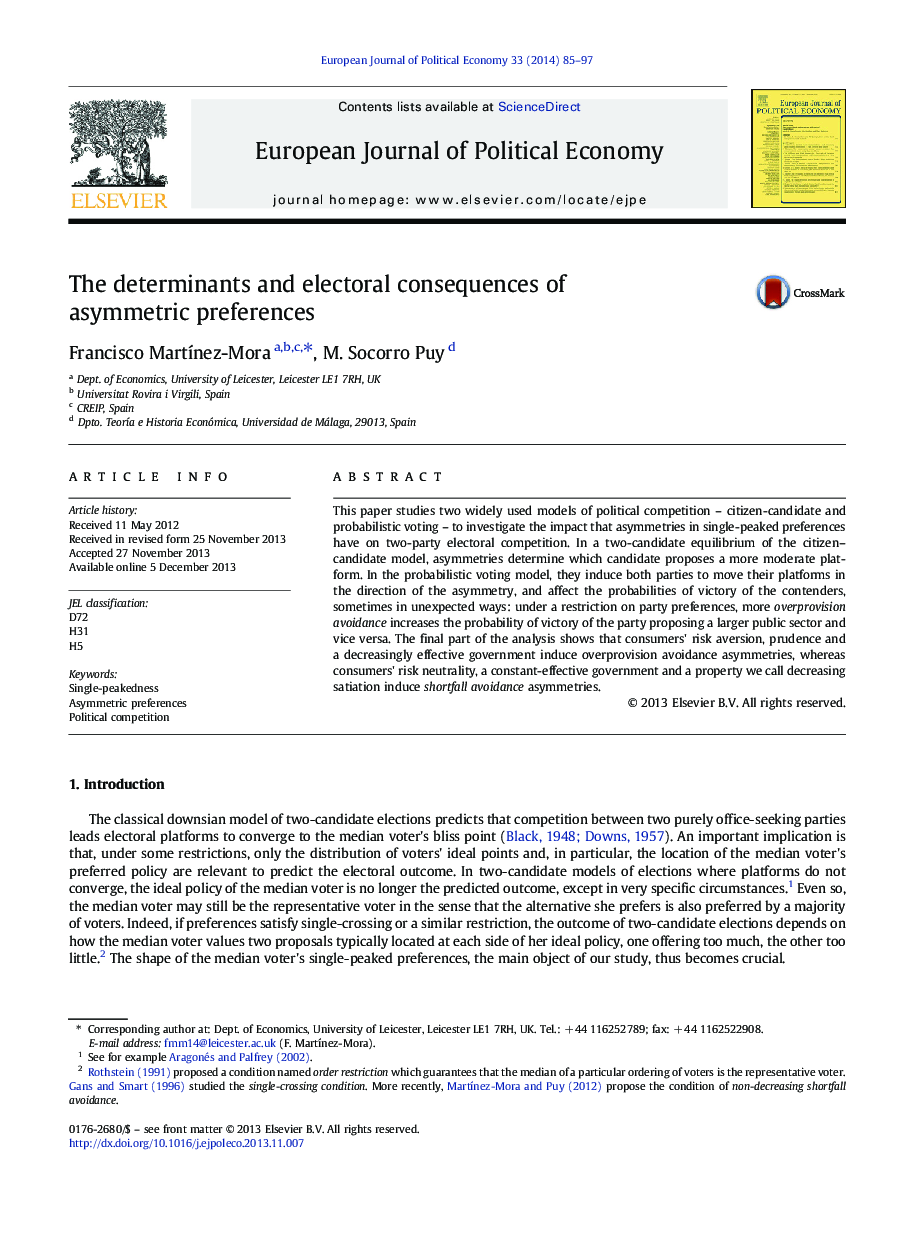| Article ID | Journal | Published Year | Pages | File Type |
|---|---|---|---|---|
| 5068082 | European Journal of Political Economy | 2014 | 13 Pages |
â¢Single-peaked preferences are a source of asymmetries in electoral competition.â¢With endogenous entry, they determine which candidate is more moderate.â¢With probabilistic voting, they also affect the probabilities of winning.â¢Asymmetries can justify why both parties propose a smaller public sector.â¢Sources of asymmetry: risk-aversion, prudence, returns to scale in public spending.
This paper studies two widely used models of political competition - citizen-candidate and probabilistic voting - to investigate the impact that asymmetries in single-peaked preferences have on two-party electoral competition. In a two-candidate equilibrium of the citizen-candidate model, asymmetries determine which candidate proposes a more moderate platform. In the probabilistic voting model, they induce both parties to move their platforms in the direction of the asymmetry, and affect the probabilities of victory of the contenders, sometimes in unexpected ways: under a restriction on party preferences, more overprovision avoidance increases the probability of victory of the party proposing a larger public sector and vice versa. The final part of the analysis shows that consumers' risk aversion, prudence and a decreasingly effective government induce overprovision avoidance asymmetries, whereas consumers' risk neutrality, a constant-effective government and a property we call decreasing satiation induce shortfall avoidance asymmetries.
